Menu
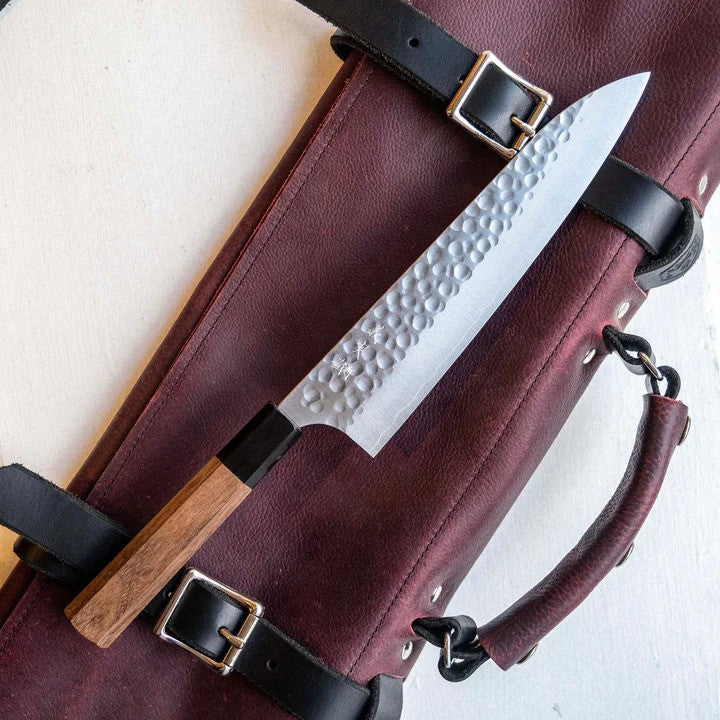
THE BLACKSMITH
YOSHIMI KATO
- Choosing a selection results in a full page refresh.




















Usually ready in 1 hour
| Length | 170 mm |
| Total Length | 315 mm |
| Steel | Aogami (Blue) Super |
| Handle | Oak |
| Ferrule | Black pakke wood |
| Rockwell | 62-64 |
| Height Spine to heel | 46 mm |
| Width at Spine | 2.7 mm |
| Weight | 136 grams |
| Bevel | Double (50/50) |
Yoshimi Kato
Yoshimi Kato works out of the Takefu Knife Village and took over the Family business from his father in 2013. His Father Hiroshi Kato-san started the shop in the late 1960's and was inaugurated as the 4th Chairman of the Takefu Knife village in 1994. Making incredible knives runs in the family obviously and we're very excited to have these incredibly sharp knives in our shop. They have one of the most beautiful damascus patterns we have ever seen and are sharpened by famous knife sharpener Makoto Kurosaki; brother of one of our favorite knifemakers Yu Kurosaki.
Takefu Knife Village
The Takefu Knife Village is a cooperative workshop in the Echizen region of Japan. It is the home to a long list of blacksmiths that we work with and many young and upcoming apprentices learning the trade. The area has a 700 year long history of smithing with roots in agricultural tools turned cutlery powerhouse.
The Knife
The Bunka is an all purpose shape that is very similar to the ever versatile santoku. With its more aggressive K-tip, or reverse tanto tip, these guys can do everything the santoku can, but excel in finer tip work for things like brunoise shallots and garlic. These knives are a surprising joy to thin and work on, despite the stainless cladding, and the tall bevels give them a great cutting feel through harder ingredients like carrots and sweet potatoes.
Follow these care recommendations for your Japanese knives to protect the edge and keep them sharp as long as possible:
All products are shipped within 24 hours. We offer same day shipping for products ordered by 12pm. Please allow 4-7 business days for your shipment to arrive with standard shipping. Expedited shipping options are also available at checkout.
We offer free shipping on orders within Canada over $150 CAD and free shipping on orders to the US over $200 USD.
Curbside pick-up is available at both our Hamilton and Etobicoke locations.
To make sure our customers are always satisfied, we offer full refunds on products for 14 days after receiving them. See our full return policy for details.
More questions? Check out our shipping policy, our return policy, or reach out to us directly.


The Bunka is a mid-sized, all-purpose knife that is compact, nimble, and handles many tasks. It's a touch shorter than the Gyuto and Kiritsuke, making it easier to wield and less intimidating to use. The "reverse tanto" or "K-tip" gives the user more travel for their guide finger toward the tip of the knife, which is super handy for tasks that require precise tip work, like brunoise shallot or garlic. It's great at slicing smaller proteins and flying through any mid-sized vegetable.
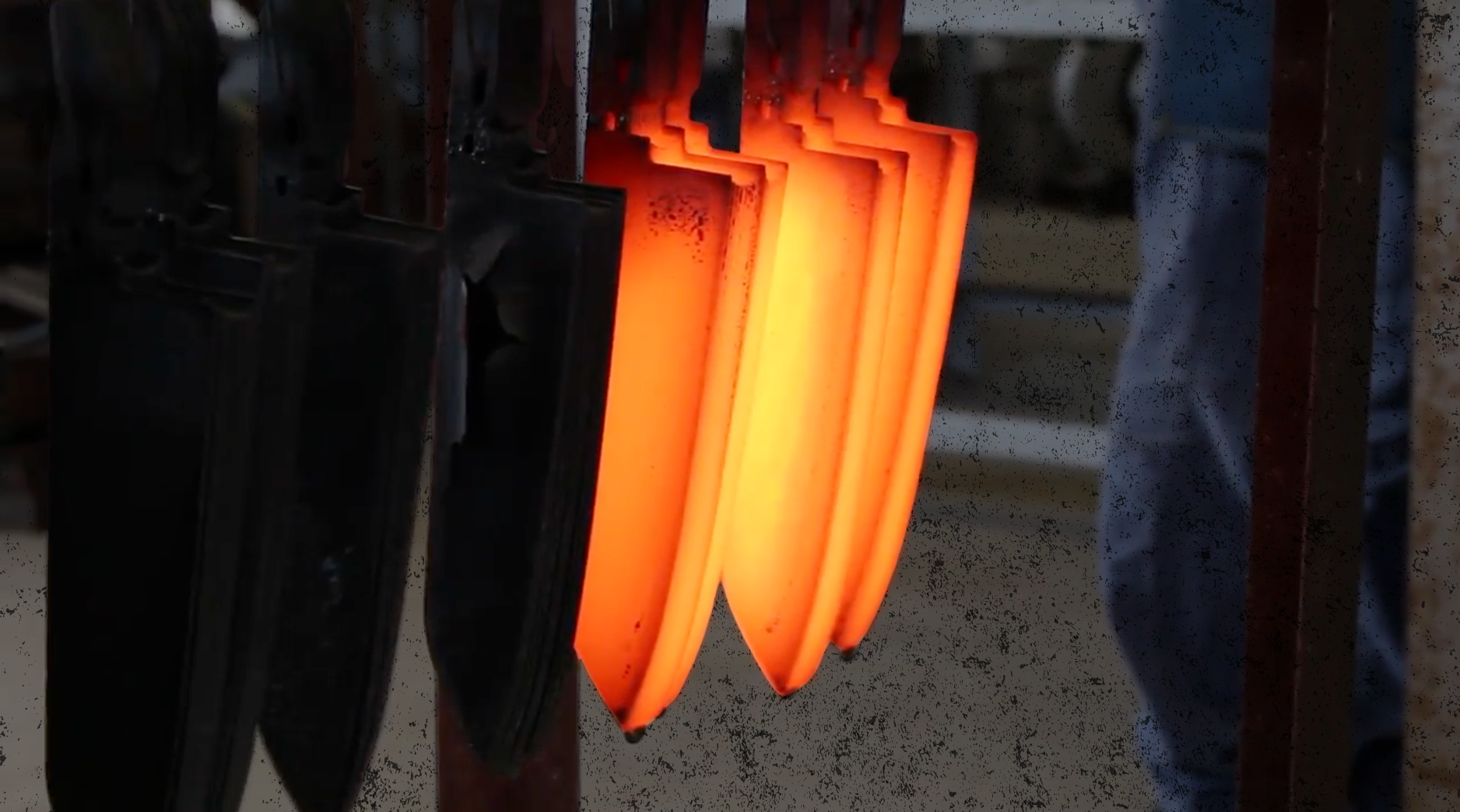
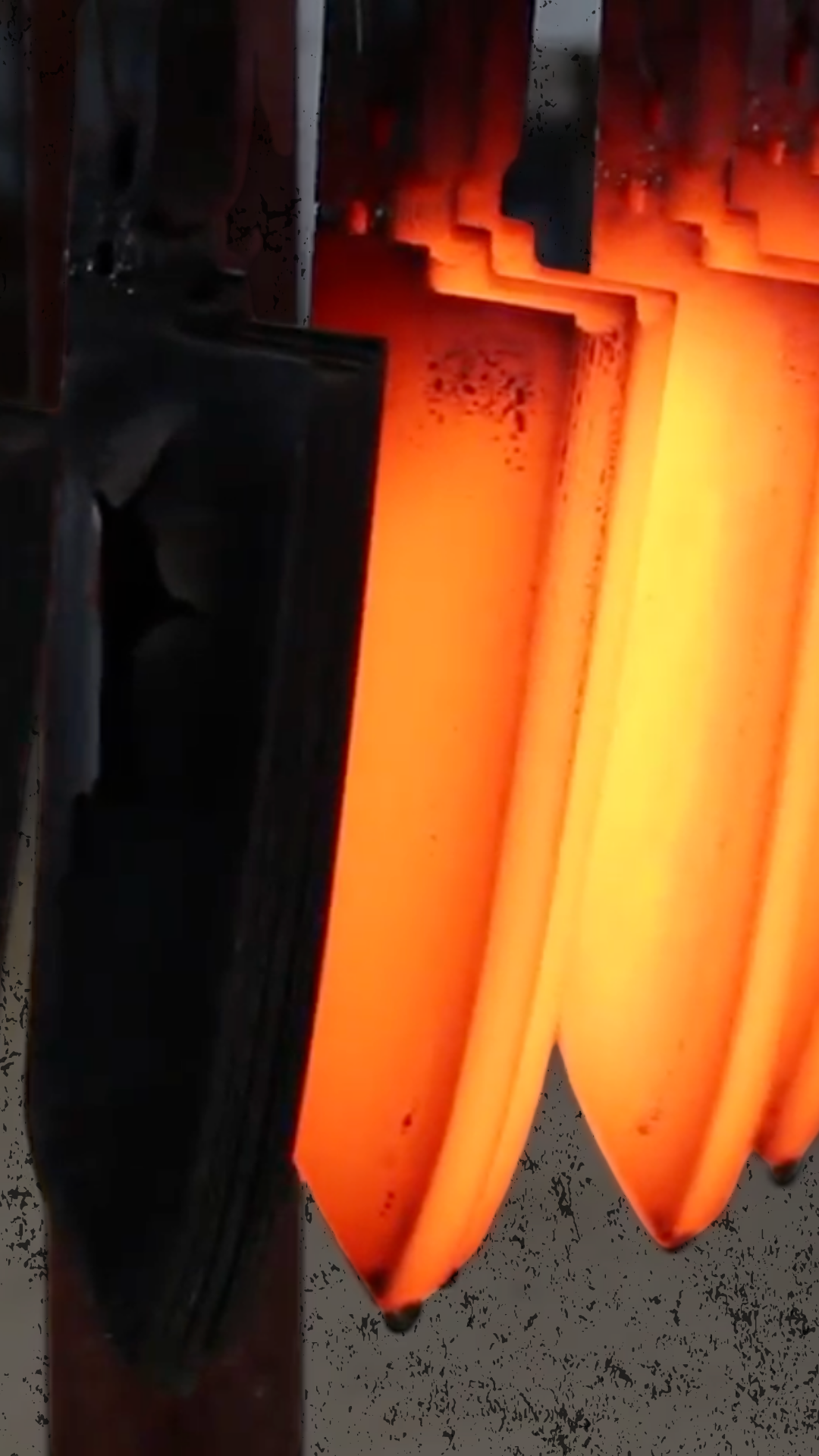
AKA Blue Super: This steel is considered by many to be the best carbon steel available for knife making. Containing elevated levels of carbon, chromium and tungsten and with the addition of molybdenum it is easy to sharpen, gets super sharp, is less reactive to rust, and is less brittle (compared to other carbon steels).
Chemical Composition:
C 1.4-1.5% | Cr 0.3-0.5% | W 2.0-2.5% | Mo 0.3-0.5% | V 0.5%
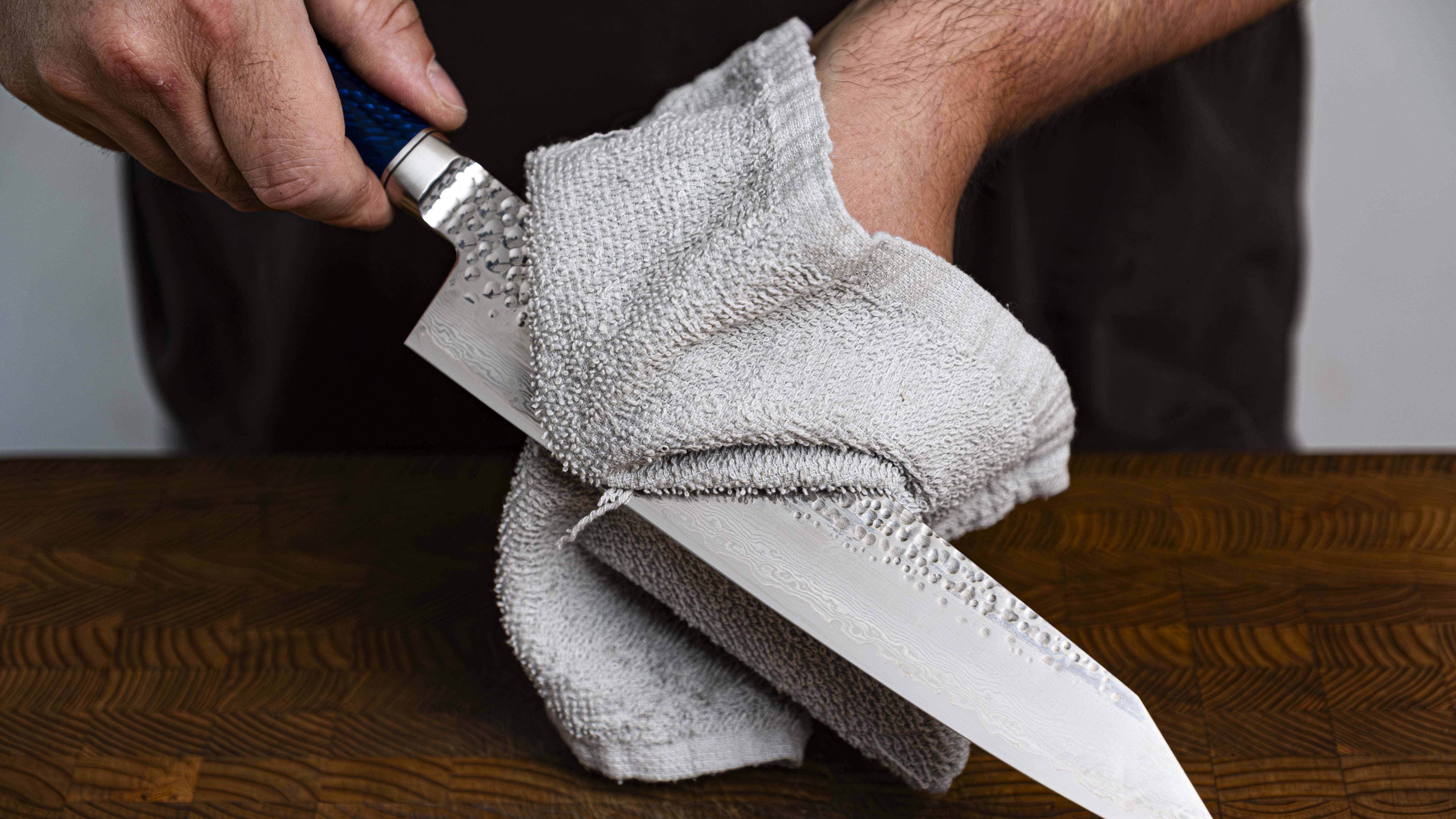
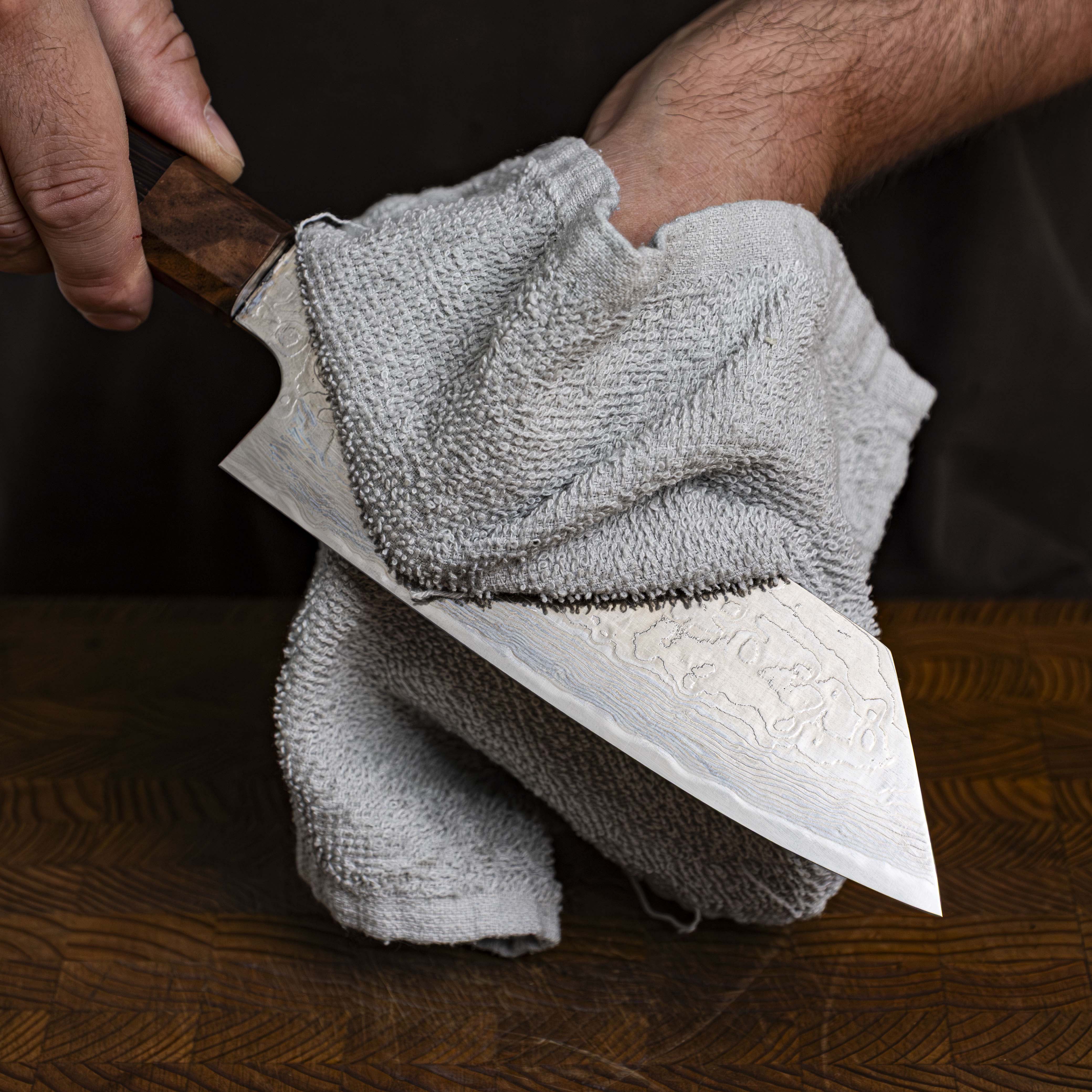
MODERATE MAINTENANCE
Stainless clad knives have two softer outer layers of stainless steel around a harder core layer of carbon steel. The clad line (wavy line near the cutting edge of the knife) is where the layers of stainless steel end. Past this point, the exposed carbon steel is susceptible to rust or discoloration. This edge will develop a patina (a darkening of the steel; blue, dark grey, sometimes black colouration of the blade) no matter how well they are cared for. Stainless clad knives are great for those who want the easy sharpening of a carbon steel coupled with the rust resistant properties of stainless steel.

Yoshimi Kato works out of the Takefu Knife Village in Echizen City, Fukui Prefecture, Japan. He took over the family business, Kanehiro Hamono, from his father in-law, Hiroshi Kato-san, in 2017. Hiroshi Kato-san started the shop in the late 1960's and was inaugurated as the 4th Chairman of the Takefu Knife Village in 1994. He was certified by the Japanese Government ’s Ministry of Economy, Trade, and Industry as “Dentou-kougeishi,” meaning “Traditional Master Craftsman;” a distinct honour bestowed to very few craftsmen with decades of training, work, and apprenticeship who have passed the “Master of Traditional Crafts Certification Examination” from the nation’s Association for the Promotion of Traditional Craft Industries.
